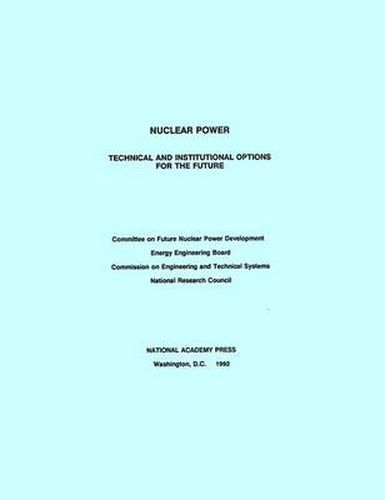Readings Newsletter
Become a Readings Member to make your shopping experience even easier.
Sign in or sign up for free!
You’re not far away from qualifying for FREE standard shipping within Australia
You’ve qualified for FREE standard shipping within Australia
The cart is loading…






The construction of nuclear power plants in the United States is stopping, as regulators, reactor manufacturers, and operators sort out a host of technical and institutional problems. This volume summarizes the status of nuclear power, analyzes the obstacles to resumption of construction of nuclear plants, and describes and evaluates the technological alternatives for safer, more economical reactors. Topics covered include: institutional issues - including regulatory practices at the federal and state levels, the growing trends toward greater competition in the generation of electricity, and nuclear and non-nuclear generation options; and critical evaluation of advanced reactors - covering attributes such as cost, construction time, safety, development status, and fuel cycles. Finally, three alternative federal research and development programs are presented.
$9.00 standard shipping within Australia
FREE standard shipping within Australia for orders over $100.00
Express & International shipping calculated at checkout
The construction of nuclear power plants in the United States is stopping, as regulators, reactor manufacturers, and operators sort out a host of technical and institutional problems. This volume summarizes the status of nuclear power, analyzes the obstacles to resumption of construction of nuclear plants, and describes and evaluates the technological alternatives for safer, more economical reactors. Topics covered include: institutional issues - including regulatory practices at the federal and state levels, the growing trends toward greater competition in the generation of electricity, and nuclear and non-nuclear generation options; and critical evaluation of advanced reactors - covering attributes such as cost, construction time, safety, development status, and fuel cycles. Finally, three alternative federal research and development programs are presented.